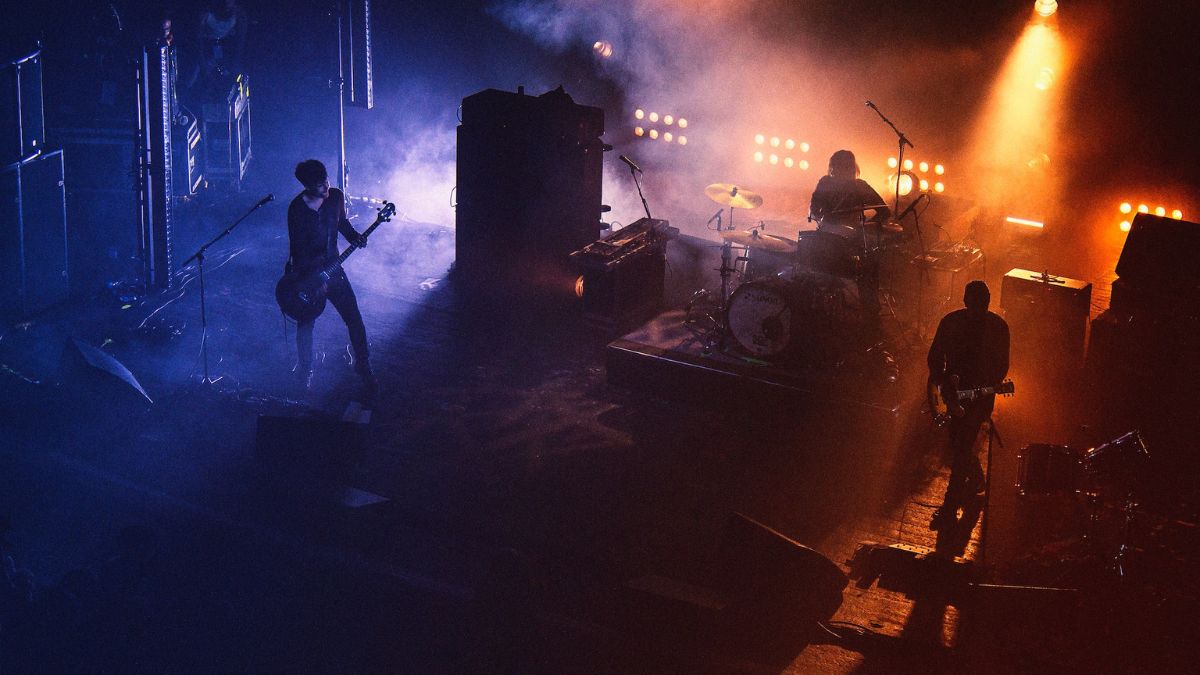“Bennie and the Jets” is an imaginary description of a fictional, cutting-edge band that is meant to satirize the music industry of the 1970s. The lyrics focus on how the industry and fans are fixated on flash and showmanship. In addition, this song manages to touch on generational differences and explores how music and culture change with time.
Bernie Taupin got the idea for the lyrics from a totally fictional place, although they were inspired by real experiences. The track was created at the height of John and Taupin’s songwriting prowess and was the product of extensive collaboration. Some of the song’s themes (like the shallowness of the music industry) were emphasized in the choice to “fake-live” the studio recording, which can be heard on the track.
In this article, we’ll perform an analysis of these whimsical lyrics to discover their intended meaning. We’ll also take a look at the satirical cleverness and songwriting story behind this track that make it accessible to anyone. Without further ado, let’s get started!
“Bennie and the Jets” Lyrics Meaning
The lyrics appear to begin from an outsider’s point-of-view who is sarcastically observing the audience at a band’s show. It may also be from the point-of-view of Bennie or a fan himself. Regardless, the purpose of the first verse is to introduce Bennie and the Jets with a satirical flair.
The narrator is trying to get some “kids” to “shake it loose together.” Basically, he’s hyping them up. After all, the “spotlight’s hitting something that’s been known to change the weather.” Translation? The show’s lighting is so powerful it can hit the sky and clouds. Bennie and the Jets are producing a spectacle.
He goes on to say that they’ll “kill the fattened calf tonight.” This is a reference to the parable of the prodigal son, a teaching of Jesus found in Luke 15. Basically, killing the fattened calf means you’re throwing a big celebration. The narrator then promises “electric music” and “solid walls of sound.” These are references to genre and production trends in the 1970s music industry.
The pre-chorus is from the point-of-view of the fans. It shows us the silly chatter being heard in the audience, including two characters called Candy and Ronnie. They praise Bennie and the Jets, calling them “weird,” “wonderful,” “spaced out,” and “really keen.” These are all slang ways of saying they like the show.
The famous chorus continues this adoration by describing Bennie (the band’s leader). Her “mohair suit” and “electric boots” seem to excite the crowd and the “magazine” world. In a word, she is sensational. Contrary to a popular misconception, this has nothing to do with West Side Story, a musical in which two gangs (the “jets” and “sharks”) are at odds.
Verse two is a bit more ambiguous, but is about similar themes. The point-of-view returns to the original outside observer, who is again speaking to the “kids” (young people). He sarcastically tells them to “plug into the faithless,” which means to continue focusing on shallow trends, novelty, and spectacle.
These “faithless” folks are made “ageless” by Bennie. This means that she and her music make them feel young and immortal. Even though these “faithless” youngsters are “blinded,” they can’t see it because they’re satisfied with their diversions.
This is a problem because the era is full of generational conflict. The narrator describes fighting between parents and children “in the streets.” Instead of talking about meaningful things in music, the music industry is focused on being glamorous. It’s a cynical picture, but it’s paired with a happy, distracting tune to create a sense of irony.
From here on out, the lyrics are repetitive. In summary, “Bennie and the Jets” is a description of a grand distraction. It is meant to subtly make fun of the music industry and its fans while cashing in on them at the same time. Given the massive success of this track, it’s safe to say John and Taupin succeeded!
The Story Behind “Bennie and the Jets”
I’d like to tell you about a fascinating event that inspired these lyrics, but I can’t. Bernie Taupin, being the true creative he is, came up with them through imagination. He did have a clear picture in his head, however, when writing. According to an interview he gave to Rolling Stone, Taupin envisions Bennie and the Jets as a “proto sci-punk band, fronted by an androgynous woman who looks like something out of a Helmut Newton photograph.”
In that same interview, Elton John revealed some additional information about the song. When he first read the lyrics, he instantly knew the track needed to be “off-the-wall,” which he definitely accomplished. Interestingly, the crowd noise heard on the track comes from a real Elton John show that had been done years prior.
Speaking of the crowd noise, that production technique, known as the “fake-live” method, was producer Gus Dudgeon’s idea. Reportedly, when John unintentionally played an early chord, Dudgeon heard it and had the idea to add these elements to the mix.
“Bennie and the Jets” is a big part of the reason why Elton John is the most successful solo artist in the history of the Billboard charts. It was a #1 hit in the US and Canada, cementing John’s permanent seat in music history’s Hall of Fame. Critically and commercially, it can only be considered a huge success.
The next time you play this true classic, let these pieces of background information make it even more special!

